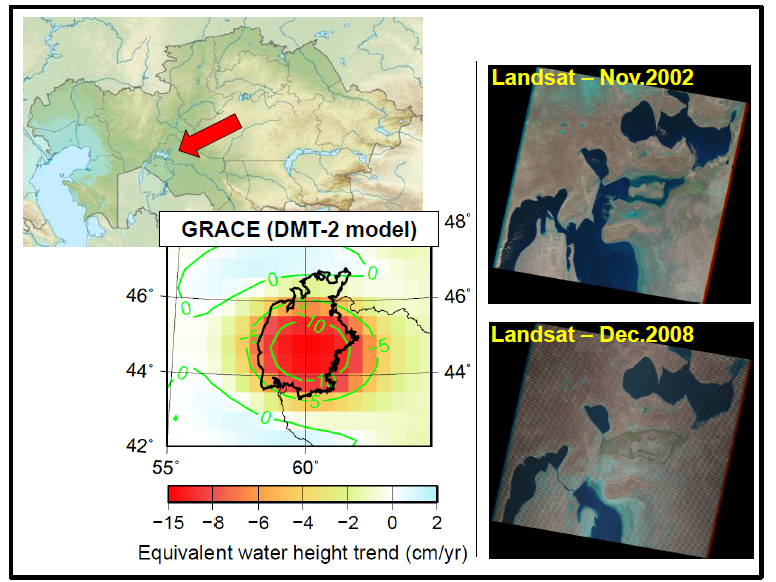Hydrological change
Observation of hydrological processes is essential for our understanding and prediction of the global water cycle and climate change. To that end, various remote sensing techniques are used. For instance, optical and InSAR imagery allows us to estimate the lateral extension of open water bodies and their temporal behaviour (including the flood events). Variations of the amplitude of SAR and scatterometer data can be used to retrieve changes of moisture content in the soil and vegetation, while surface deformations captured in InSAR time series often reveal underlying hydrological process, such as ground water reservoir depletion. Satellite altimetry senses variations in water levels. Satellite gravimetry can monitor a re-distribution of water mass. Furthermore, a combination of data collected by different techniques plays a steadily increasing role. For instance, a combination of altimetry and imagery observations allows for quantifying water volume variations in lakes, whereas by combining gravimetry with other remote sensing techniques we can separate total water storage variations into those at the Earth’s surface and in the sub-surface. Importantly, we process and interpret the collected data in a close collaboration with experts in hydrology both from our faculty and from many other institutes.
Remote sensing is a rapidly developing research area, which continuously benefits from modern technological developments. New satellite missions, new sensors, and new data processing concepts facilitate a fast improvement in the accuracy, resolution, and coverage of the observations. This explains a steadily increasing usage of remote sensing in hydrology.

Extinction of the Aral Sea in the Central Asia observed with the Satellite gravimetry mission GRACE and Optical Imagery mission Landsat